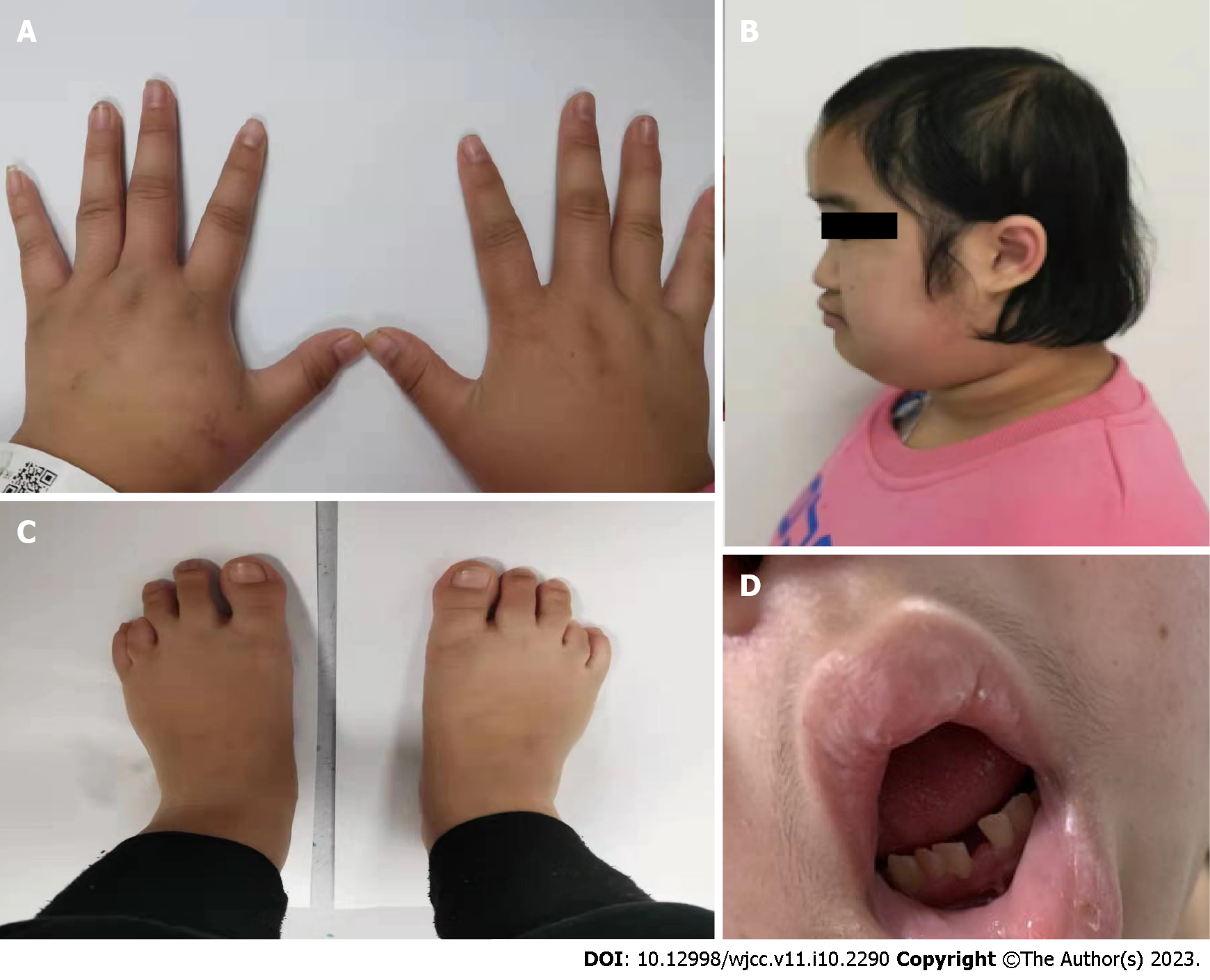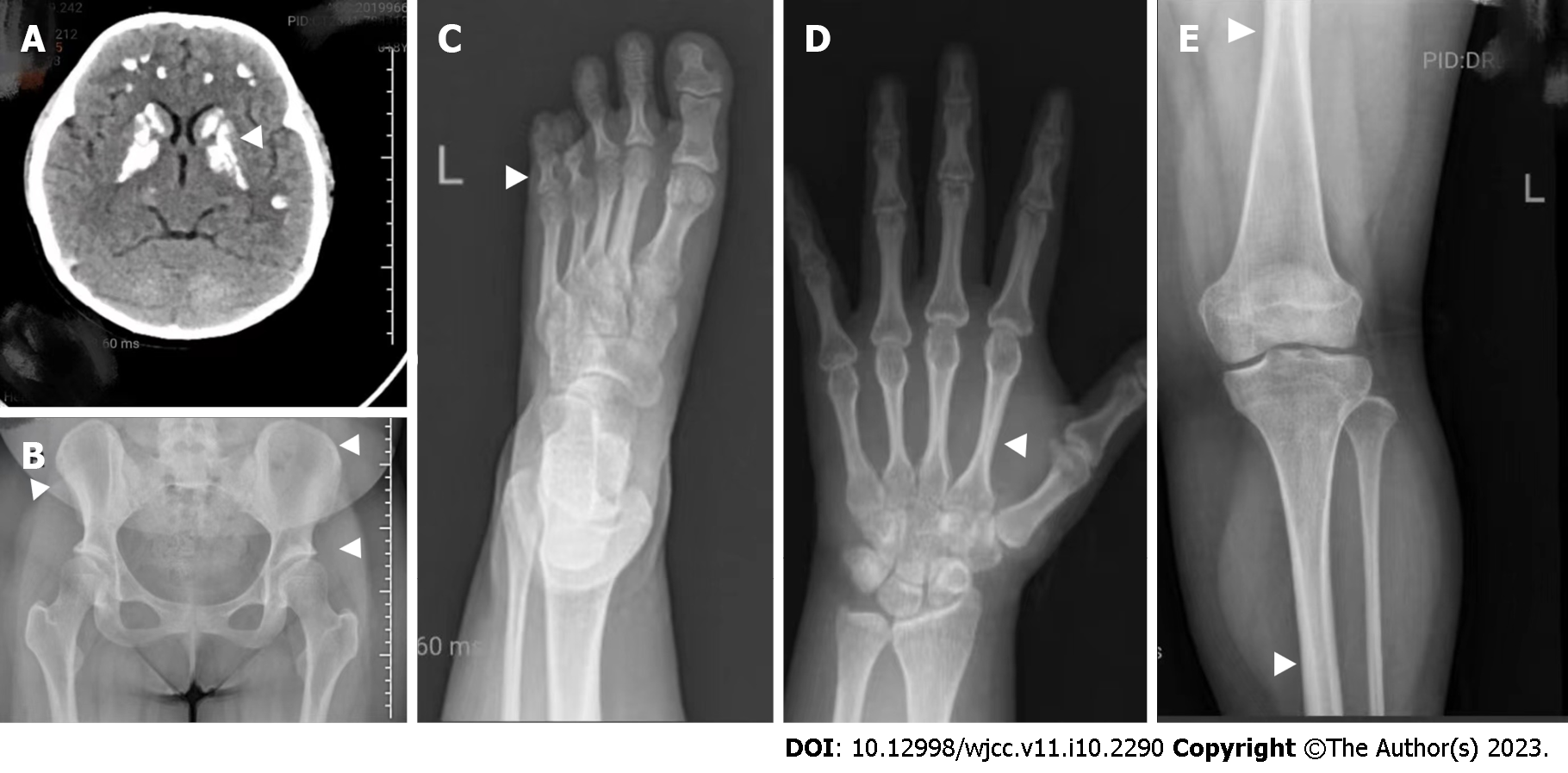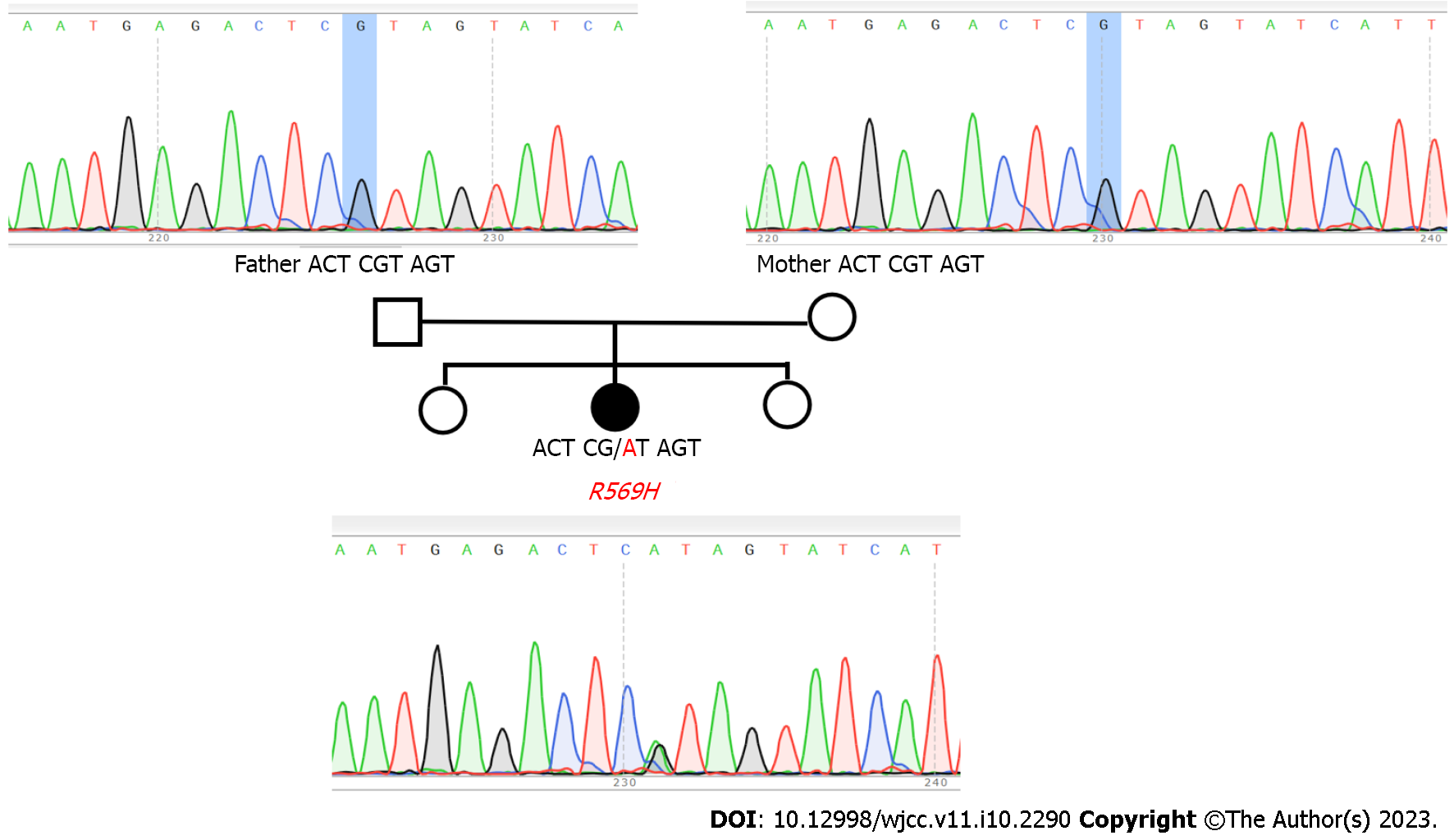Copyright
©The Author(s) 2023.
World J Clin Cases. Apr 6, 2023; 11(10): 2290-2300
Published online Apr 6, 2023. doi: 10.12998/wjcc.v11.i10.2290
Published online Apr 6, 2023. doi: 10.12998/wjcc.v11.i10.2290
Figure 1 Special phenotypes of this 18-year-old female patient with Kenny-Caffey syndrome type 2.
A: Small hands; B: Cheek freckles, high anterior hairline, sparse scalp hair, prominent forehead, depressed nasal bridge, low-set ears, small mandible, slightly higher mandibular arch, increased quilt hair; C: Feet and short in bilateral 4th toes; D: Partially absent dentition.
Figure 2 The head computed tomography and skeletal X-ray features of the patient are indicated by arrows A–E, respectively.
A: Head computed tomography (noncontrast) showing symmetrical calcifications in the cerebellar hemisphere, frontotemporal parietal lobe, basal ganglia, and thalamus; B: Digital radiography (DR) of the anteroposterior pelvis showing that the right ilium is smaller compared to the left side, as well as shallow acetabular fossa on both sides; C: DR of the left foot showing short and small 4th and 5th metatarsal bones and corresponding phalanges in both feet; D: The phalanges of the left little finger are short, with thickening of the cortex of the tubular bone and narrowing of the medulla; E: DR of the left lower limb showing thickening of the cortex of the tubular bone and narrowing of the medulla.
Figure 3 Genetic pedigree of the patient showing the chromatograms of Sanger sequencing results of the FAM111A mutation for the patient and her parents.
Data were obtained by Sanger sequencing during the confirmation of the diagnosis. Forward sequencing was performed for the mutation. In the pedigree, the black symbols represent probands. Squares and circles represent males and females, respectively. In the chromatogram, the black letters indicate the nucleotide sequence of the wild-type, while the nucleotides in red indicate mutations. R569H was identified in all probands but not in the parents who received the sequencing tests. The younger and older sisters were phenotypically normal and did not agree to undergo Sanger sequencing.
- Citation: Yuan N, Lu L, Xing XP, Wang O, Jiang Y, Wu J, He MH, Wang XJ, Cao LW. Clinical and genetic features of Kenny-Caffey syndrome type 2 with multiple electrolyte disturbances: A case report. World J Clin Cases 2023; 11(10): 2290-2300
- URL: https://www.wjgnet.com/2307-8960/full/v11/i10/2290.htm
- DOI: https://dx.doi.org/10.12998/wjcc.v11.i10.2290











